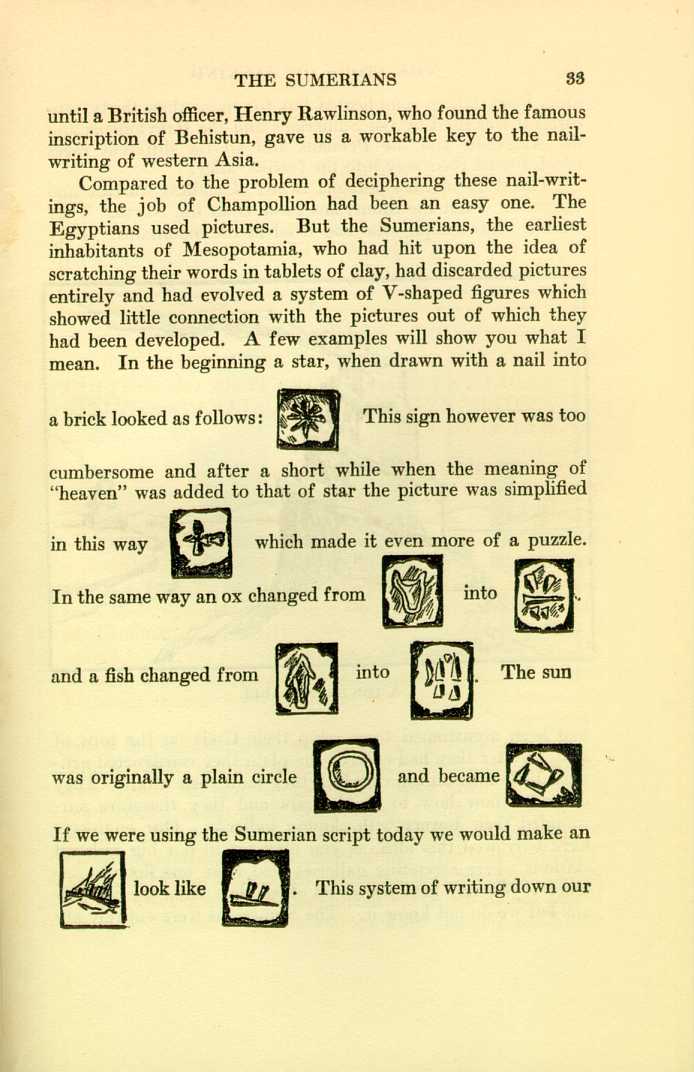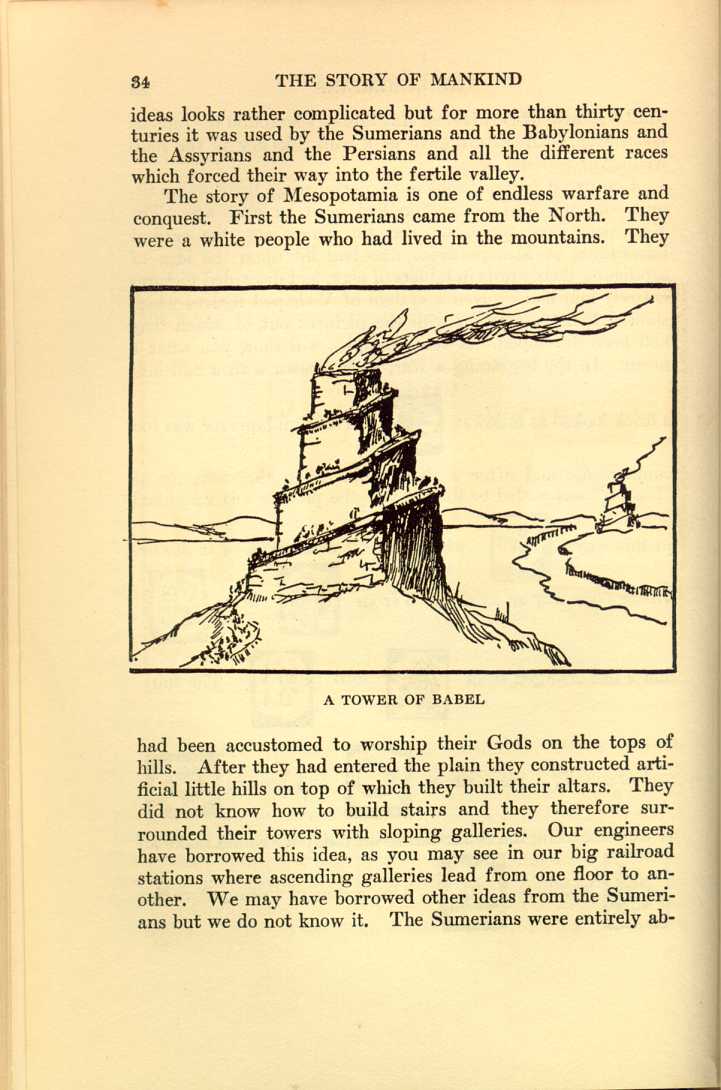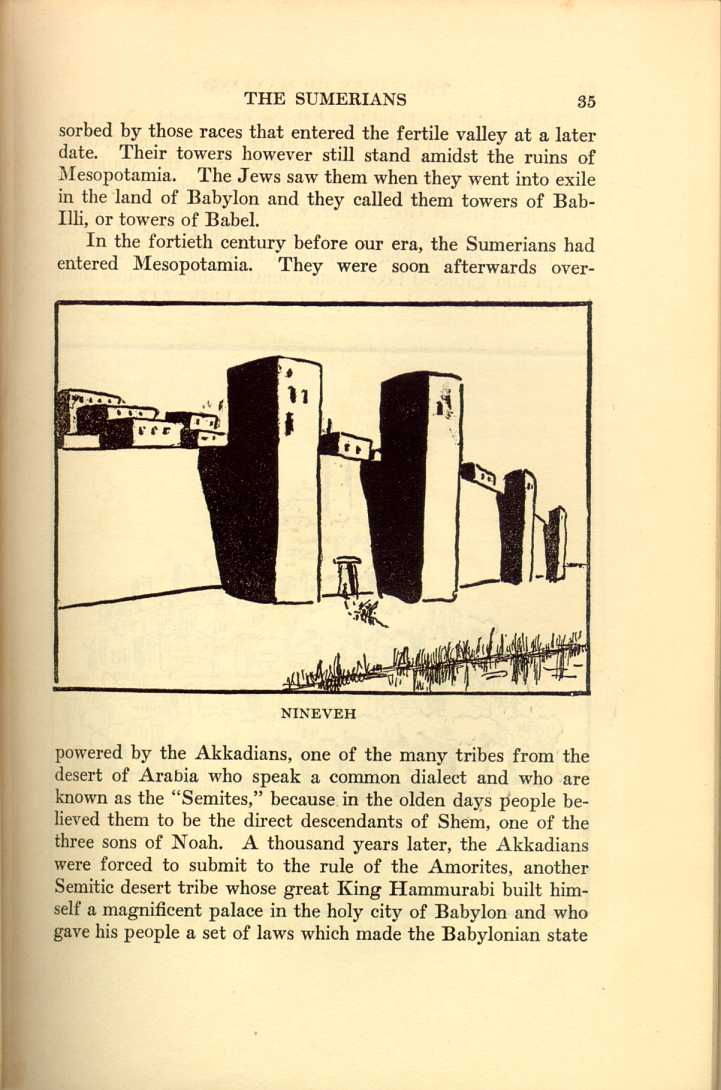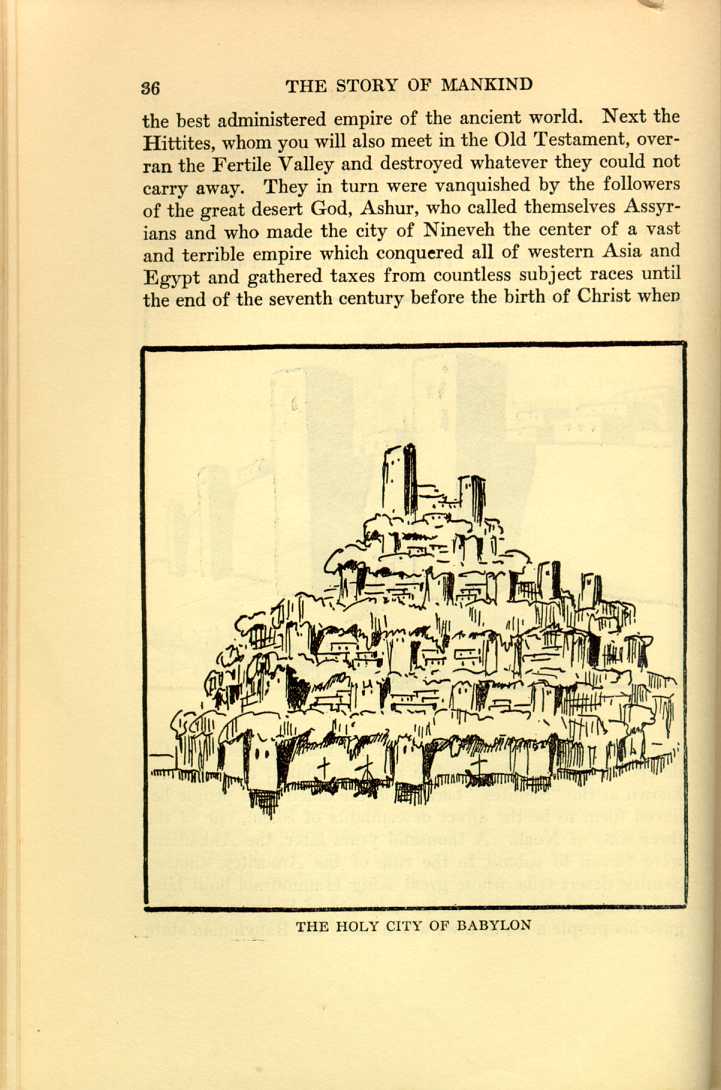| THE SUMERIANS The Story of Mankind | ||
9. THE SUMERIANS
THE SUMERIAN NAIL WRITERS, WHOSE CLAY
TABLETS TELL US THE STORY OF ASSYRIA
AND BABYLONIA, THE GREAT SEMITIC
MELTING-POT
THE fifteenth century was an age of great discoveries. Columbus tried to find a way to the island of Kathay and stumbled upon a new and unsuspected continent. An Austrian bishop equipped an expedition which was to travel eastward and find the home of the Grand Duke of Muscovy, a voyage which led to complete failure, for Moscow was not visited by western men until a generation later. Meanwhile a certain Venetian by the name of Barbero had explored the ruins of western Asia and had brought back reports of a most curious language which he had found carved in the rocks of the temples of Shiraz and engraved upon endless pieces of baked clay.
But Europe was busy with many other things and it was not until the end of the eighteenth century that the first "cuneiform inscriptions'' (so-called because the letters were wedge-shaped and wedge is called "Cuneus'' in Latin) were brought to Europe by a Danish surveyor, named Niebuhr. Then it took thirty years before a patient German school-master by the name of Grotefend had deciphered the first four letters, the D, the A, the R and the SH, the name of the Persian King Darius. And another twenty years had to go by
Compared to the problem of deciphering these
nail-writings,
the job of Champollion had been an easy one. The
Egyptians used pictures. But the Sumerians, the earliest
inhabitants of Mesopotamia, who had hit upon the idea of
scratching their words in tablets of clay, had discarded
pictures
entirely and had evolved a system of V-shaped figures which
showed little connection with the pictures out of which they
had been developed. A few examples will show you what I
mean. In the beginning a star, when drawn with a nail into
a brick looked as follows:
 [Description: Square containing a star.]
[Description: Square containing a star.]
 [Description: Square containing symbol for 'heaven'.]
[Description: Square containing symbol for 'heaven'.]
 [Description: Square containing simplified ox head.]
[Description: Square containing simplified ox head.]
 [Description: Square containing an abstract symbol for an ox.]
[Description: Square containing an abstract symbol for an ox.]
 [Description: Square containing image of a fish.]
[Description: Square containing image of a fish.]
 [Description: Square containing abstract image of a fish.]
[Description: Square containing abstract image of a fish.]
 [Description: Square containing image of the sun.]
[Description: Square containing image of the sun.]
 [Description: Square containing abstract symbol for the sun.]
[Description: Square containing abstract symbol for the sun.]
 [Description: Square containing image of a ship.]
[Description: Square containing image of a ship.]
 [Description: Square containing an abstract symbol for a ship.]
[Description: Square containing an abstract symbol for a ship.]
The story of Mesopotamia is one of endless warfare
and conquest. First the Sumerians came from the North. They
were a white People who had lived in the mountains. They

TOWER OF BABEL
[Description: The tower of Babel.]
In the fortieth century before our era, the Sumerians
had entered Mesopotamia. They were soon afterwards over-powered

NINEVEH
[Description: Image of Nineveh, a walled city.]

THE HOLY CITY OF BABYLON
[Description: Sketch of the city of Babylon, built on a hill.]| THE SUMERIANS The Story of Mankind | ||